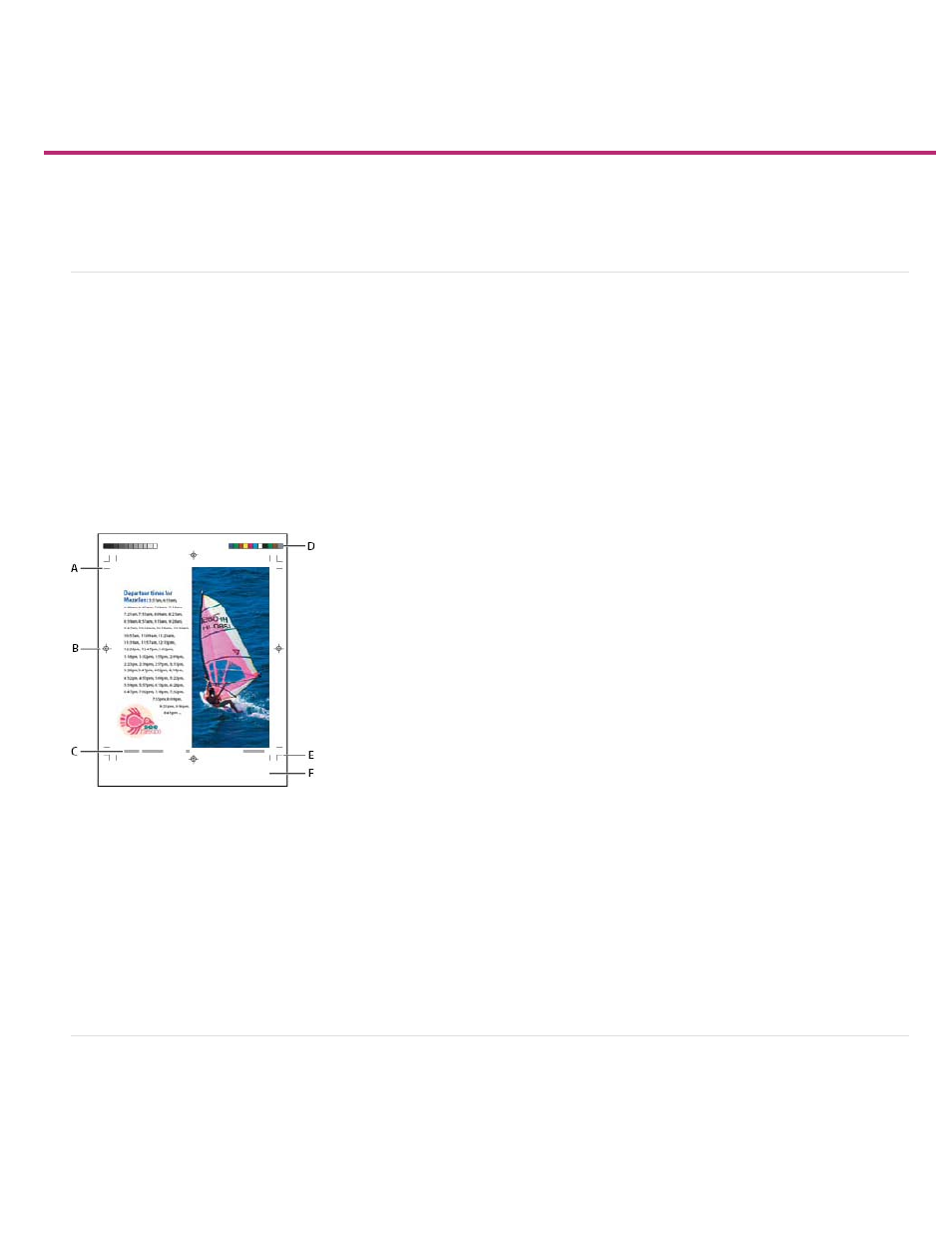Printer’s marks and bleeds, Printer s marks and bleeds – Adobe InDesign User Manual
Page 742

Printer’s marks and bleeds
Specify printer’s marks
Print the bleed or slug areas
Change the page position on the media
Specify printer’s marks
When you prepare a document for printing, a number of marks are needed to help the printer determine where to trim the paper, align separation
films when producing proofs, measure film for correct calibration and dot density, and so on. Selecting any page-mark option expands the page
boundaries to accommodate printer’s marks, bleed (the parts of text or objects that extend past the page boundary to account for slight inaccuracy
when trimming), or slug area (an area outside the page and bleed that contains printer instructions or job sign-off information).
If you are setting crop marks and want the artwork to contain a bleed or slug area, make sure that you extend the artwork past the crop marks to
accommodate the bleed or slug. Also make sure that your media size is large enough to contain the page and any printer’s marks, bleeds, or the
slug area. If a document doesn’t fit the media, you can control where items are clipped by using the Page Position option in the Setup area of the
Print dialog box.
If you select the Crop Marks option, fold marks are printed as solid lines when spreads are printed.
Printer’s marks
A. Crop marks B. Registration mark C. Page information D. Color bars E. Bleed marks F. Slug area
1. Choose File > Print.
2. Click Marks and Bleed on the left side of the Print dialog box.
3. Select either All Printer’s Marks or individual marks.
Print the bleed or slug areas
Specify the bleed and slug areas in the Document Setup dialog box. The bleed and slug areas are discarded when the document is trimmed to its
final page size. Objects outside the bleed or slug area (whichever extends farthest) are not printed.
When printing, you can override the default location for bleed marks in the Bleed And Slug area of the Marks And Bleed area.
737
